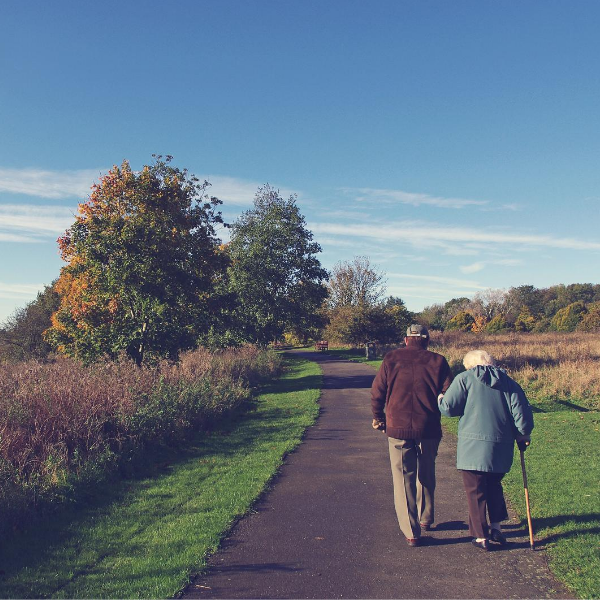Changes in posture and gait (walking pattern) are common with aging. Changes in the skin and hair are also common. The skeleton provides support and structure to the body. Joints are the areas where bones come together. They allow the skeleton to be flexible for movement. In a joint, bones do not directly contact each other. Instead, they are cushioned by cartilage in the joint, synovial membranes around the joint, and fluid. Muscles provide the force and strength to move the body. Coordination is directed by the brain, but is affected by changes in the muscles and joints. Changes in the muscles, joints, and bones affect the posture and walk, and lead to weakness and slowed movement.

HOW AGING CHANGES
- People lose bone mass or density as they age, especially women after menopause. The bones lose calcium and other minerals.
- The spine is made up of bones called vertebrae. Between each bone is a gel-like cushion (called a disk). The middle of the body (trunk) becomes shorter as the disks gradually lose fluid and become thinner.
- Vertebrae also lose some of their mineral content, making each bone thinner. The spinal column becomes curved and compressed (packed together). Bone spurs caused by aging and overall use of the spine may also form on the vertebrae.
- The foot arches become less pronounced, contributing to a slight loss of height.
- The long bones of the arms and legs are more brittle because of mineral loss, but they do not change length. This makes the arms and legs look longer when compared with the shortened trunk.
- The joints become stiffer and less flexible. Fluid in the joints may decrease. The cartilage may begin to rub together and wear away. Minerals may deposit in and around some joints (calcification). This is common in the shoulder.
- Hip and knee joints may begin to lose cartilage (degenerative changes). The finger joints lose cartilage and the bones thicken slightly. Finger joint changes are more common in women. These changes may be inherited.
- Lean body mass decreases. This decrease is partly caused by a loss of muscle tissue (atrophy). The speed and amount of muscle changes seem to be caused by genes. Muscle changes often begin in the 20s in men and in the 40s in women.
- Muscles are less toned and less able to contract because of changes in the muscle tissue and normal aging changes in the nervous system. Muscles may become rigid with age and may lose tone, even with regular exercise.
EFFECT OF CHANGES
EFFECT OF CHANGES
- Bones become more brittle and may break more easily. Overall height decreases, mainly because the trunk and spine shorten.
- Breakdown of the joints may lead to inflammation, pain, stiffness, and deformity. Joint changes affect almost all older people. These changes range from minor stiffness to severe arthritis.
- The posture may become more stooped (bent). The knees and hips may become more flexed. The neck may tilt, and the shoulders may narrow while the pelvis becomes wider.
- Movement slows and may become limited. The walking pattern (gait) becomes slower and shorter. Walking may become unsteady, and there is less arm swinging. Older people get tired more easily and have less energy.
- Strength and endurance change. Loss of muscle mass reduces strength.
PREVENTION
Exercise is one of the best ways to slow or prevent problems with the muscles, joints, and bones. A moderate exercise program can help you maintain strength, balance, and flexibility. Exercise helps the bones stay strong. It is also important to have a well-balanced diet that includes ingredients which is good for the bones. However, not our daily meals contains enough nutrients that it is why taking supplements is more efficient. Supplements contains super-food which will support and help you to achieve the results you want. All in one capsule!


